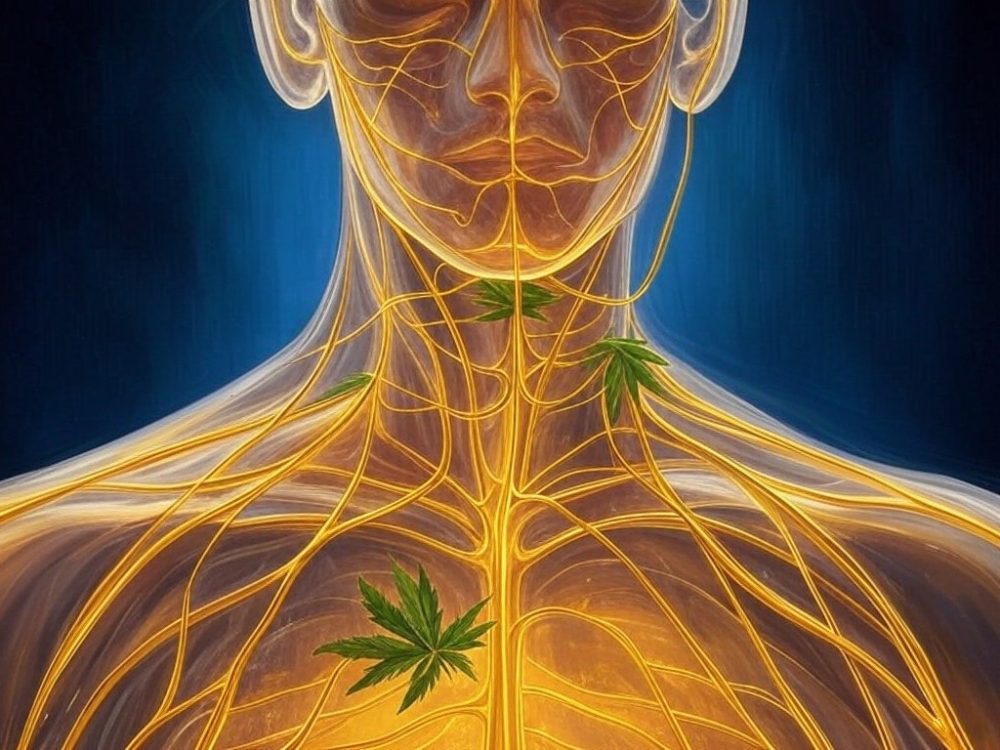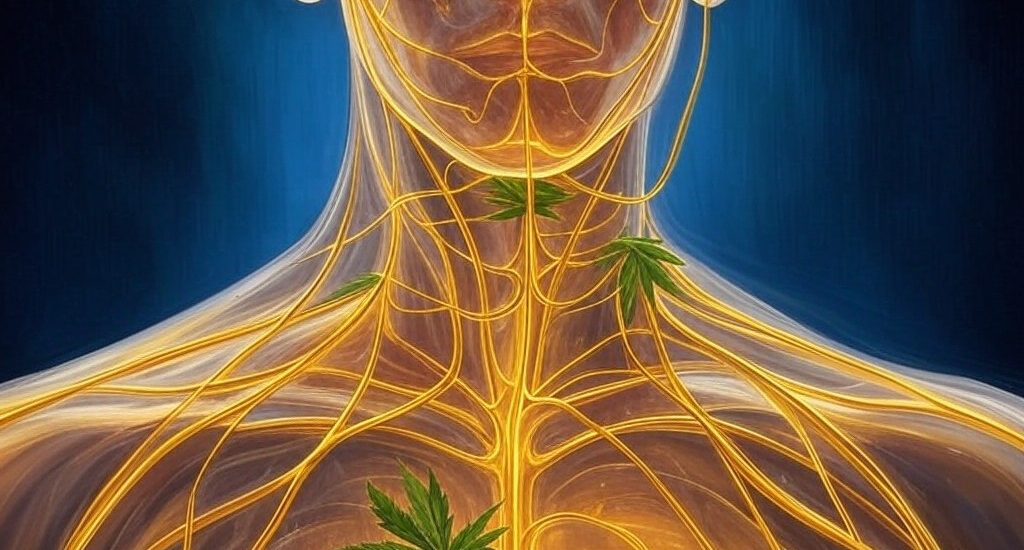If This Were a New Pharmaceutical, It’d Be a Billion-Dollar Blockbuster
Cannabinoids & Pain: The Study That Changes Everything
Wait, So We Already Had a Non-Addictive Painkiller?
Pain has been part of the human condition since we first stubbed a toe on a rock or woke up with a crick in the neck from sleeping in the wrong position. We’ve spent centuries trying to outsmart it, treating it with everything from leeches to whiskey to highly addictive pharmaceuticals.
And yet, here we are, in 2025, still scrambling for a solution that isn’t worse than the problem itself.
Enter a new Yale study, published in the prestigious Proceedings of the National Academy of Sciences, that may force us to rethink everything we thought we knew about pain management. The researchers found that CBD, CBG, and CBN—compounds found in cannabis—block Nav1.8, a protein responsible for amplifying pain signals. Translation? These cannabinoids can stop pain before it reaches the brain, potentially offering relief without addiction, overdose risk, or diminishing effectiveness over time.
Read the full study here through the free CED Literature Library
It’s almost funny. After all the years of debating, regulating, and outright banning, the answer to safer pain relief may have been sitting in a plant the whole time.

So… why isn’t this front-page news? Let’s dig in.
The Science—How These Cannabinoids Are Silencing Pain Signals
Nav1.8: The Protein That Makes Pain Louder
To understand why this is a breakthrough, you first need to know about Nav1.8, a key protein in your nervous system that acts like an amplifier for pain. When something hurts—whether it’s a stubbed toe or chronic nerve pain—Nav1.8 helps keep that signal firing. It’s like a microphone turned up too loud, making sure your brain doesn’t miss a single note of agony.
That’s where CBD, CBG, and CBN come in. According to the study, these cannabinoids suppress the activity of Nav1.8, effectively turning down the volume on pain. And of the three, CBG was the most effective at blocking this protein.
This isn’t just interesting on a molecular level—it’s clinically relevant. Nav1.8 has already been targeted in pharmaceutical research for pain relief, with early drug trials showing that blocking it reduces pain in humans. The problem? Drug companies are still trying to develop synthetic Nav1.8 blockers. Meanwhile, cannabis already contains natural compounds that do the job—without the side effects of opioids or NSAIDs.
So why aren’t we using them?

The Psychological & Personal Benefits—Why This Matters to You
Less Pain, More Sanity
Chronic pain isn’t just physical—it wears down your mental health. It fuels anxiety, depression, and frustration, making everyday life a minefield.
What’s exciting about cannabinoids like CBG, CBD, and CBN is that they don’t just block pain—they also have anti-inflammatory, anti-anxiety, and neuroprotective properties.
Translation? You don’t just feel less pain—you feel better overall.
If you’ve ever been in pain long enough to fantasize about trading your spine for a new one, this research is a big deal.The Social Impact—Why This Isn’t Just About You
Opioids vs. Cannabinoids: The Global Stakes
In the United States alone, over 80,000 people die each year from opioid overdoses. That’s entire stadiums worth of people—gone. And yet, for millions of chronic pain patients, opioids remain one of the only options that doctors readily prescribe.
Here’s the usual dilemma:
1. Take opioids → risk addiction, withdrawal, and the need for higher doses over time.
2. Live in unbearable pain → which isn’t really “living” at all.
But now there’s a third option on the table. If CBD, CBG, and CBN can offer effective pain relief without addiction, overdose risk, or long-term tolerance issues, then why aren’t they already first-line treatments?
It’s a question worth asking. And the answer—if you follow the money—isn’t exactly surprising.
What’s Holding This Back? (Hint: It’s Not the Science)
If a big pharmaceutical company had just developed a pill that could block pain signals without addiction, it would already be a multi-billion-dollar blockbuster. You’d see ads for it every five minutes, complete with the usual montage of people jogging through parks while a soothing voiceover lists the side effects.
But cannabis is different. It’s a plant, which means it can’t be patented in the same way. Pharmaceutical companies can’t own exclusive rights to it, which makes the financial incentive to fast-track research… well, a lot less appealing.
So instead, we hear the same tired arguments:
• “We need more research!” (Despite 250,000+ studies on cannabinoids, terpenes, flavonoids and their relevant medicinal effects. See The CED Library or query my Chat Bot, CAI)
• “Cannabis isn’t medicine!” (Except that it was in the U.S. Pharmacopeia before aspirin.)
• “It’s just a placebo!” (Sure, a placebo that just happens to block pain-signaling proteins.)
It’s a familiar cycle: cannabis helps, but because it’s cannabis, we act like it’s suspicious.

The Roadblocks—What’s Holding This Back?
What’s Holding This Back? (Hint: It’s Not the Science)
If a big pharmaceutical company had just developed a pill that could block pain signals without addiction, it would already be a multi-billion-dollar blockbuster. You’d see ads for it every five minutes, complete with the usual montage of people jogging through parks while a soothing voiceover lists the side effects.
But cannabis is different. It’s a plant, which means it can’t be patented in the same way. Pharmaceutical companies can’t own exclusive rights to it, which makes the financial incentive to fast-track research… well, a lot less appealing.
So instead, we hear the same tired arguments:
• “We need more research!” (Despite 25,000+ studies on cannabis and its medicinal effects.)
• “Cannabis isn’t medicine!” (Except that it was in the U.S. Pharmacopeia before aspirin.)
• “It’s just a placebo!” (Sure, a placebo that just happens to block pain-signaling proteins.)
It’s a familiar cycle: cannabis helps, but because it’s cannabis, we act like it’s suspicious.
What Now?
The Yale study confirms what many have known for years—cannabis isn’t just an alternative treatment; it’s a better one.
💡 CBD, CBG & CBN block pain at the molecular level.
💡 CBG was the most effective.
💡 No addiction. No high. Just relief.
What Needs to Happen Next
This Yale study isn’t just another “interesting finding” to be tucked away in an academic journal—it’s a call to action. The science is clear: CBD, CBG, and CBN work for pain. CBG, in particular, is a powerhouse.
So now the question is:
1. Will the medical system finally start taking cannabinoids seriously?
2. Will regulators catch up with science instead of dragging their feet?
3. Will we, as a society, stop treating cannabis like a curiosity and start treating it like medicine?
The opioid crisis isn’t slowing down. Chronic pain patients are still suffering. We need solutions that are effective, accessible, and safe.
We may have just found one.
What do you think? Are we finally ready to let cannabis be medicine? Drop your thoughts below.
Learn More about what other medical conditions cannabis can help: CEDclinic.com
Learn More about cannabis and Chronic Pain & Inflammation specifically

